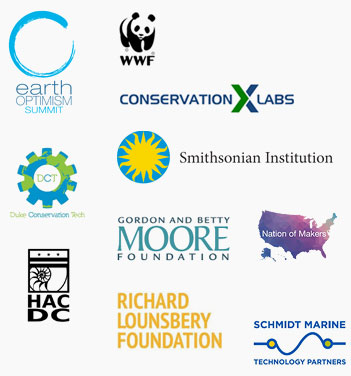Tracking of Movement of Small Animals in Forest Ecosystems: The Search for a Flexible, Affordable, and Effective Solution
The Problem
Animal movement is an essential component of life—animal move to search for food, escape predators, find shelter, locate mates, and to migrate between seasonal ranges for breeding and wintering. They also move in and out of human-occupied spaces, which can lead to mortality due to disease, conflict, accidents, or wildlife poaching. Animal movement is critical for effective conservation management because it is linked to factors that cause populations to thrive or fail. Yet, for many species, we know next to nothing about the why, where, how and when of animal movement, especially small to medium-sized vertebrates.
In recent years, there have been significant advances in improving animal devices, tools and networks for tracking small vertebrate species. These include the development of better batteries, new transmission networks, the inclusion of cell phone and GPS chips in tracking devices, the miniaturization of tracking devices, antenna networks, and the use of unmanned aerial vehicles (UAVs). However, tracking small or even medium sized vertebrate species across forest ecosystems range remains difficult, and attempting to simultaneously track multiple species throughout an ecosystem as well as other variables that answer “why, where, how and when” animals move about the landscape remains a challenge.
The Challenge
This challenge seeks flexible, field-ready solutions that enable ecosystem-wide and simultaneous tracking of multiple individuals of several small vertebrate species in dense forest ecosystems and that collects and integrates data on why, where, how and when animals move throughout ecosystems.
Problem Statement
Solutions should passively or actively track and collect data on the why, where, how and when small vertebrates move throughout forest ecosystems. Ideal systems would track 10 individuals of 4 species that range from 10-150 g in body weight (e.g. black-capped chickadee [10-12 g], ovenbird [14-20g], white-footed mouse [20-30g], Eastern chipmunk [60-150g]), though higher resolution or more frequent data capture for a wider variety of individuals or species is welcome.
This Challenge was originally pitched by Dr. Peter Leimgruber of the Smithsonian Conservation Biology Institute as part of the Make for the Planet Competition in April 2017.
Respond to this Challenge!
While the Make for the Planet competition has ended, the conservation problems have not been solved! Your ideas and project proposals are needed to make a difference in conservation.
Share your project on the Digital Makerspace to shape and improve your idea. You’ll benefit from the technical expertise of the Tribe and connect to additional financial and technical resources. We’ll help you navigate the tech development process and identify market opportunities. Through collaboration, we build conservation solutions that are impactful and have the potential to scale.
PART OF
Make For The Planet (M4TP)PROJECTS
Wild Insect Traffic Sensors
Insects are like super small, but they are kinda keeping us all alive. It would be nice to be able sense their movements in thick forests without killing em all first. We are gonna hack mice to do it!
CHALLENGE LEADER
SPONSORS & ORGANIZERS
